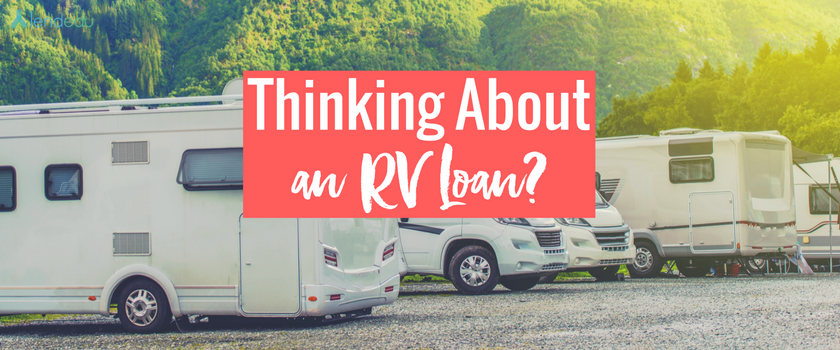
Few items exemplify the American free spirit as well as recreational vehicles do. An RV is a trailer or motor vehicle equipped for living, usually featuring space for cooking, toilet and sleeping. Also known as caravans, motorhomes and camper vans, RVs are super-hot items, with 2016 selling levels unseen in the past four decades. In the U.S., 2016 sales are targeted at 419,500 vehicles (a 12.1 percent annual jump) and 2017’s sales forecast is 438,100 units.
No one should be surprised at the upsurge in the RV lifestyle. With the Baby Boomers retiring in the millions and gas prices low, RVs provide a great way to travel all over North America on a cost-effective basis. In fact, many owners of larger RVs sell their houses and live year ’round in their motorhomes.
Types and Costs
Here’s a brief introduction to the types and typical costs of RVs:
- Class A Motorhomes: These are biggest RVs, with boxy, bus-like bodies (up to 45 feet long) and large panoramic windows. The favorite of touring country-western bands, Class A vehicles start at about $75,000, while the price of the most luxurious units can easily climb into the millions. Amenities can include a full bathroom, master suite, washer/dryer units, multiple slideouts, fully equipped kitchens and extensive entertainment systems. Owners frequently hitch an automobile to the rear for additional mobility.
- ?Class C Motorhomes: These are midsize units built from cargo vans like the Chevrolet Express and Ford Econoline. The camper portion extends over the cab area in front and supports a bed or entertainment center in that space. Class C motorhomes begin at $60,000, but can cost well over $100,000. They range in length from 20 to 33 feet, and have fewer amenities and less floor space than their big Class A brothers. On the other hand, Class C vehicles are more maneuverable, affordable and better suited to secluded campgrounds.
- ?Class B RVs: Smaller than Class-C’s, these cargo vans don’t provide camper space above the cab area. They range in price from $50,000 to $100,000, and are tight on space. You might be able to accommodate 4 people, but these are really built for one or two occupants. These units often fit into standard garage spaces, have better fuel economy than the bigger units, and they are easy to park at malls.
- Other Types: Less expensive alternatives include travel trailers, fifth-wheel trailers, popup trailers, slide-in campers for pickup trucks, and toy haulers. Typically, these are priced well below $50,000, and small units are available for less than $5,000.
Financing Alternatives
You might be able to afford paying cash for small units, and thus avoid interest charges, credit checks and paperwork. But for the more expensive items, most folks turn to other options such as credit card or personal loans. Here are the most appropriate alternatives:
- Existing Credit Card: For the least expensive equipment, generally under $10,000, you may have sufficient credit card power to charge your purchase on your card(s).
- Pros: If you already have the credit limits to support this purchase, it’s also likely you have an excellent credit rating and thus pay low interest on your credit card, under 7 percent APR. Thus, the fees are fairly low, and you don’t have to apply for new cards.
- Cons: Your credit rating may take a hit because your credit utilization ratio will rise. Even with a low APR, purchase could be expensive if you make minimum repayments.
- New Credit Card: You can apply for a new credit card to cover the cost of the purchase.
- Pros: If you have good to excellent credit, you might easily be able to get a new card with a sufficiently high credit limit to pay for the purchase. Credit cards give you the most flexibility in the amount you pay back each month.
- Cons: If your credit score is less than good or if you have a scant credit history, securing a credit card will be harder, more expensive, and may not provide the amount of credit you need. Your credit score could take a hit because the card issuer will pull your credit report, and using the card will affect you credit utilization ratio. Interest costs could run as high as 29.99 percent APR or more.
- ?Consumer Vehicle Loan: These loans are collateralized by the vehicle. Class B and Class C motorhomes are converted cargo vans, and you can usually get a vehicle loan from the manufacturer, through the dealer, or from a bank or credit union. These are fixed-payment loans with terms of up to eight years. Class A motorhomes often receive long-term, mortgage-like financing from banks, credit unions and finance companies. They usually require 20 percent down with terms up to 20 years.
- Pros: Usually easier to get since they are collateralized. Loan interest cheaper than credit card interest. If the RV has sleeping, toilet and cooking accommodations, you may be able to deduct the interest as second home mortgage interest.
- Cons: RV can be repossessed if you miss payments. Fixed payments are less flexible than credit card payments.
- Commercial Vehicle Loan: If you use your RV for your business, a commercial loan might be preferable.
- Pros: Since it won’t add debt to your personal credit, your credit score should be unaffected. Establishing that the RV is for business creates tax breaks.
- Cons: Repossession is possible. APRs can range up to 20 percent.
